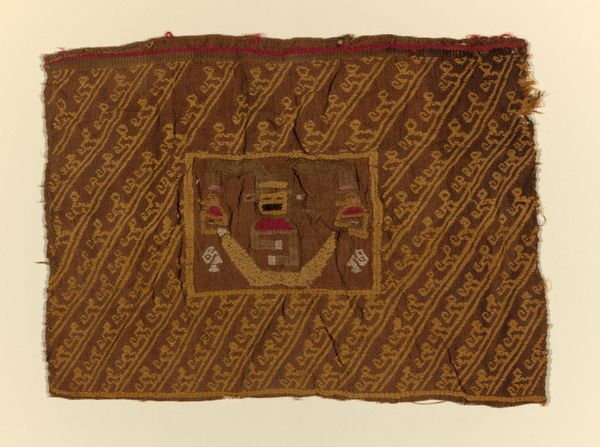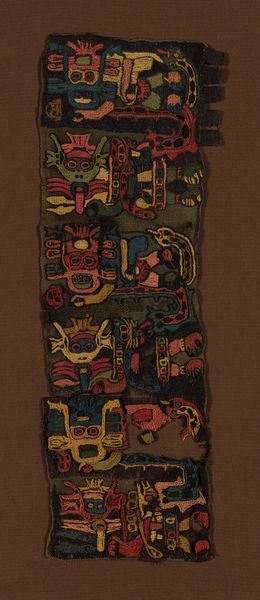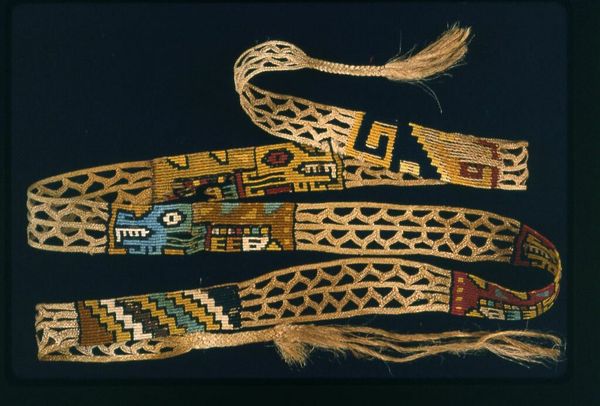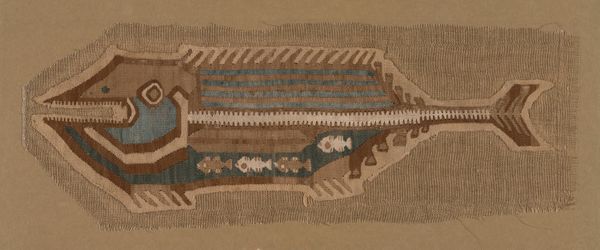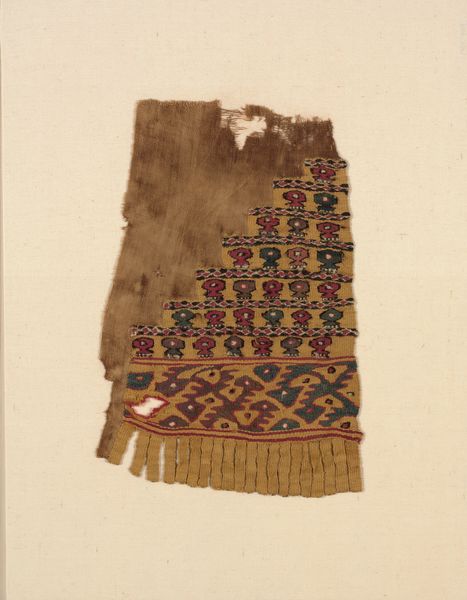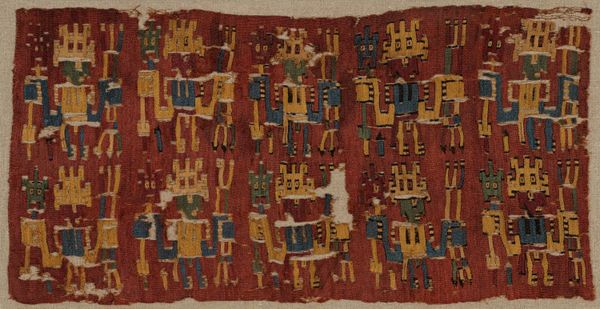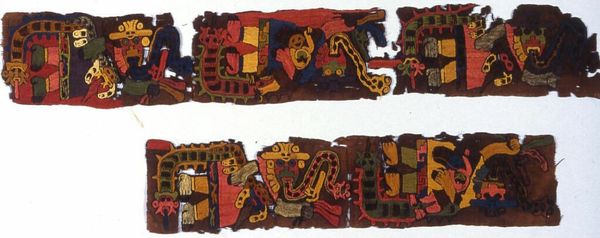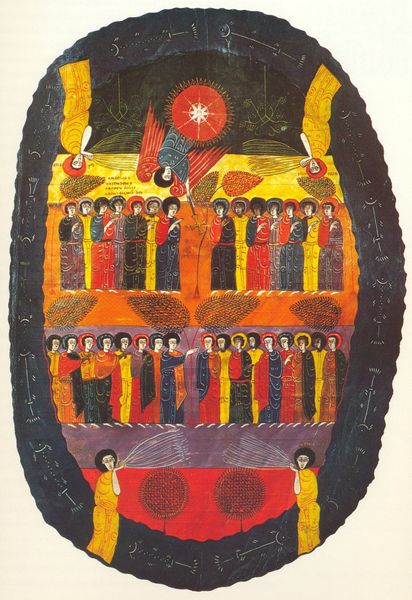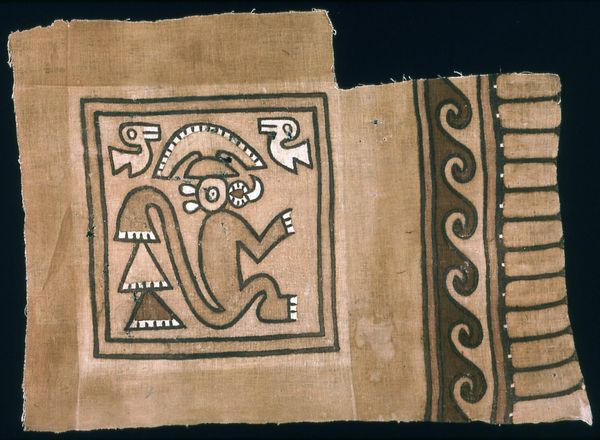
fibre-art, weaving, textile
#
fibre-art
#
pottery
#
weaving
#
textile
#
folk art
#
geometric
#
decorative art
#
indigenous-americas
Dimensions: 12.4 × 11.1 cm (4 7/8 × 4 3/8 in.)
Copyright: Public Domain
Curator: Before us is an Inca "Bag," a weaving possibly created between 1476 and 1532, now held at The Art Institute of Chicago. Editor: It strikes me immediately as visually rich. The density of patterns, and its muted colors lend a sense of solemnity. It feels heavy with cultural meaning, doesn't it? Curator: Indeed. Notice the strict horizontal bands, each presenting variations on a geometric motif. The textile construction allows for a remarkable precision in the rendering of abstract forms. Consider how color is deployed, with the dark bands creating visual anchors, and how each thread contributes to the overall structure. Editor: Yes, the structural elements are crucial. But I'm more interested in what this bag *did*. This isn't merely decorative, is it? These bags were practical objects, but also significant cultural signifiers, worn during rituals, representing community identity and social standing in a hierarchical society. How do the patterns relate to social class or gender? Curator: That is less certain, of course. What we can ascertain is the controlled geometry. The weaver's intention is communicated through this manipulation of visual space. The repeated motifs suggest order and intention rather than chance. The variations within the pattern are a key point of interest for my reading of the bag’s intention. Editor: Intention… but whose intention? Was it truly individual expression, or a representation of the Incan empire's control and homogeneity enacted through a single item. Think of how weaving traditions preserved Indigenous knowledge but were reshaped by colonization. This textile exists as a reminder of the Incan culture but also of cultural change. Curator: True, though by focusing on such a macro view, we lose sight of the actual design. It's vital to acknowledge the deliberate choices made within the narrow visual language of the Incan textile arts tradition. To examine these choices we use formal means of deconstruction. Editor: And to understand what those design choices *meant* in their world. In essence, an indigenous voice is embedded here. And through engagement we become better attuned to how social values, too, are interlaced with threads of this intricate, material legacy. Curator: Agreed. A complex interaction to explore indeed.
Comments
No comments
Be the first to comment and join the conversation on the ultimate creative platform.


